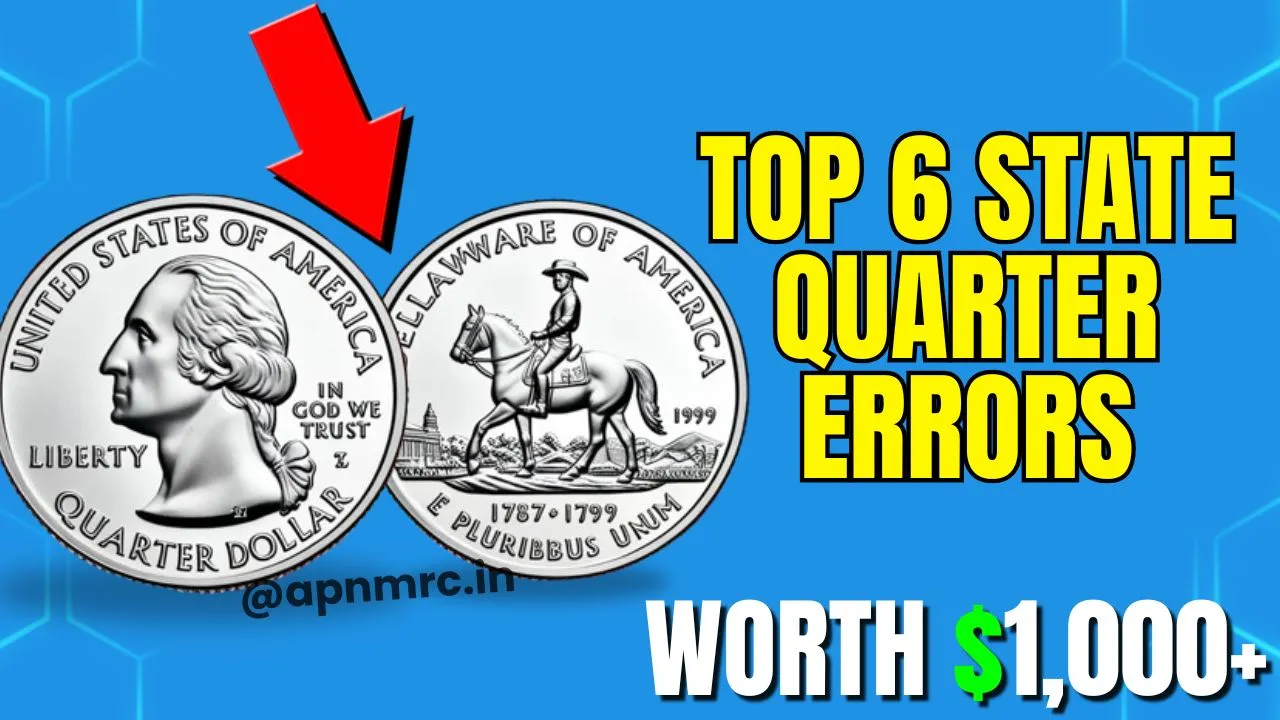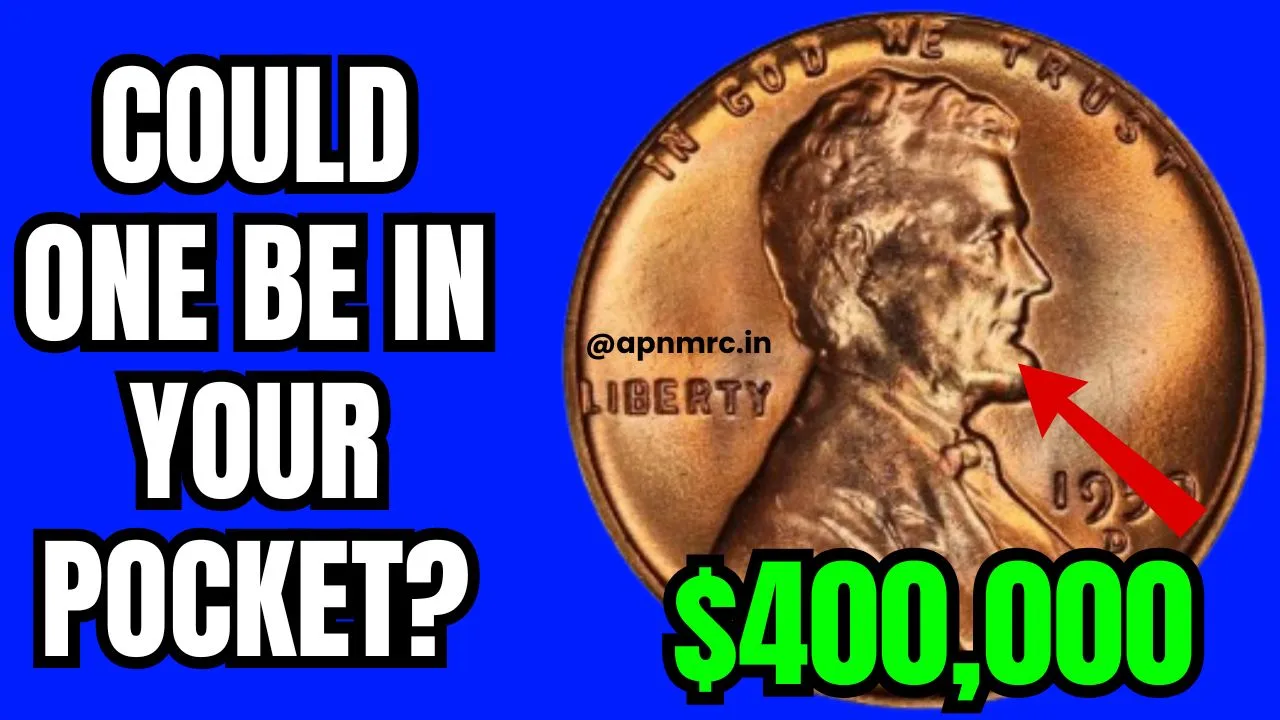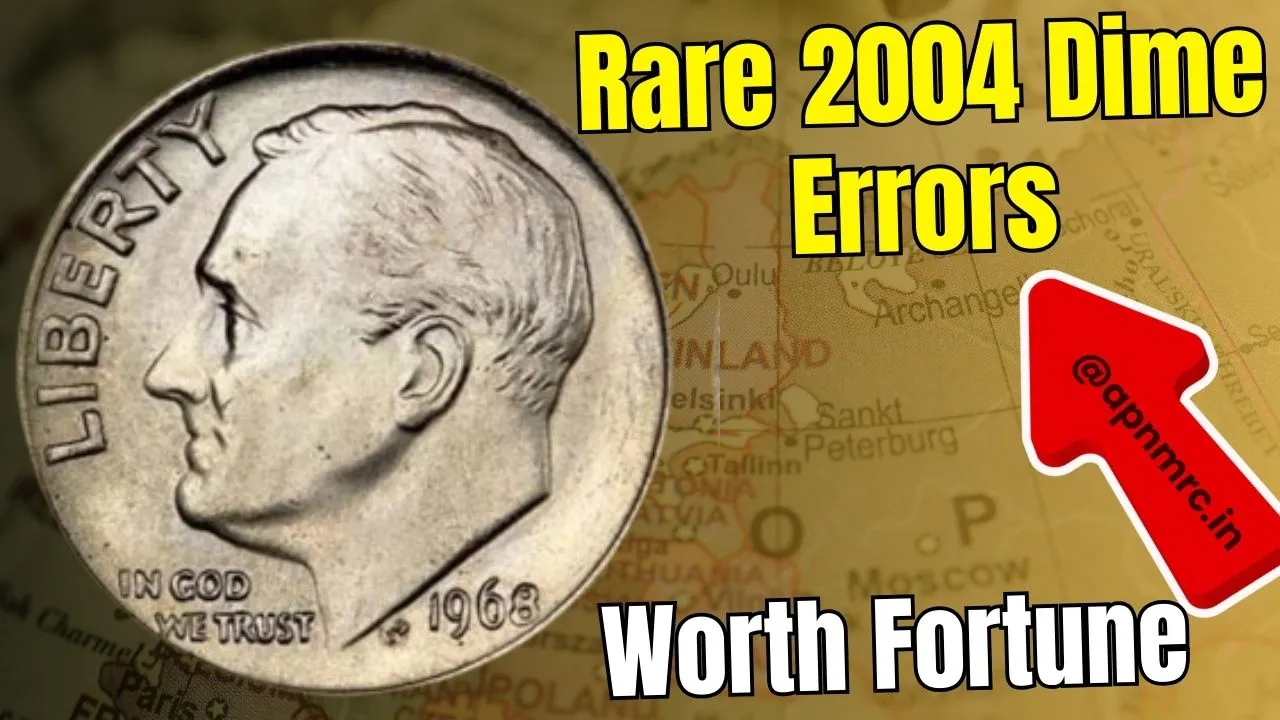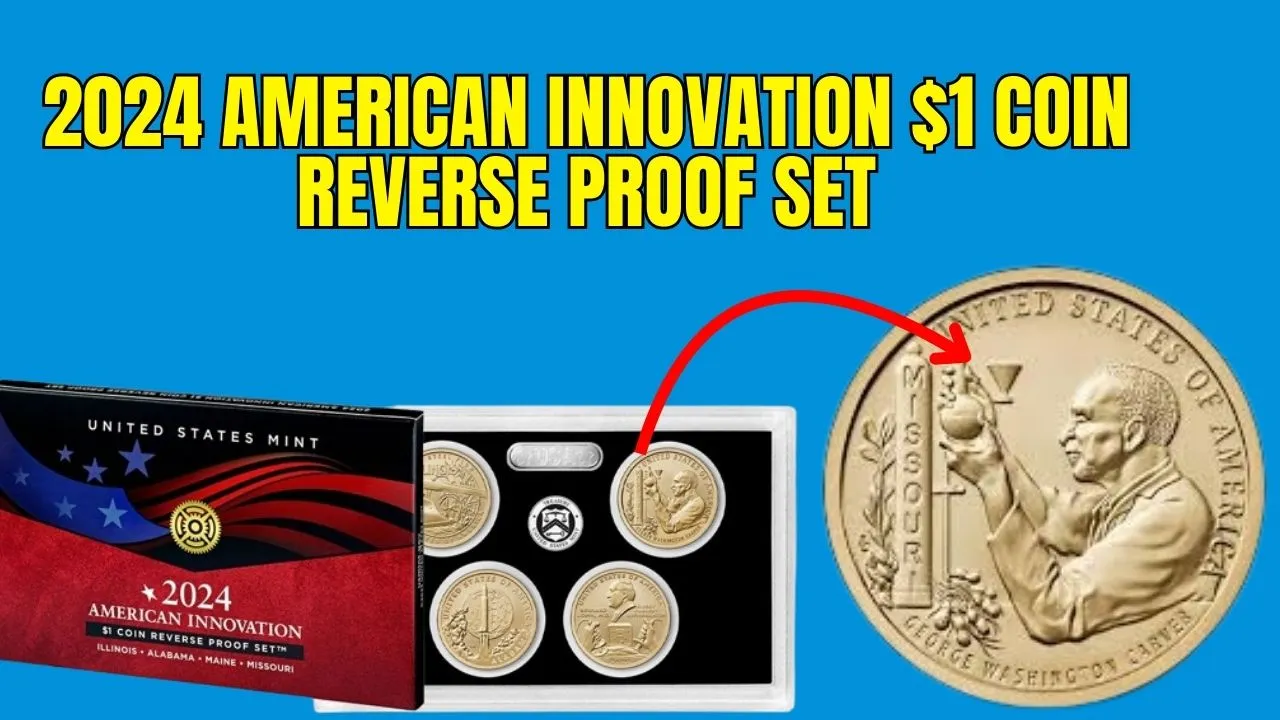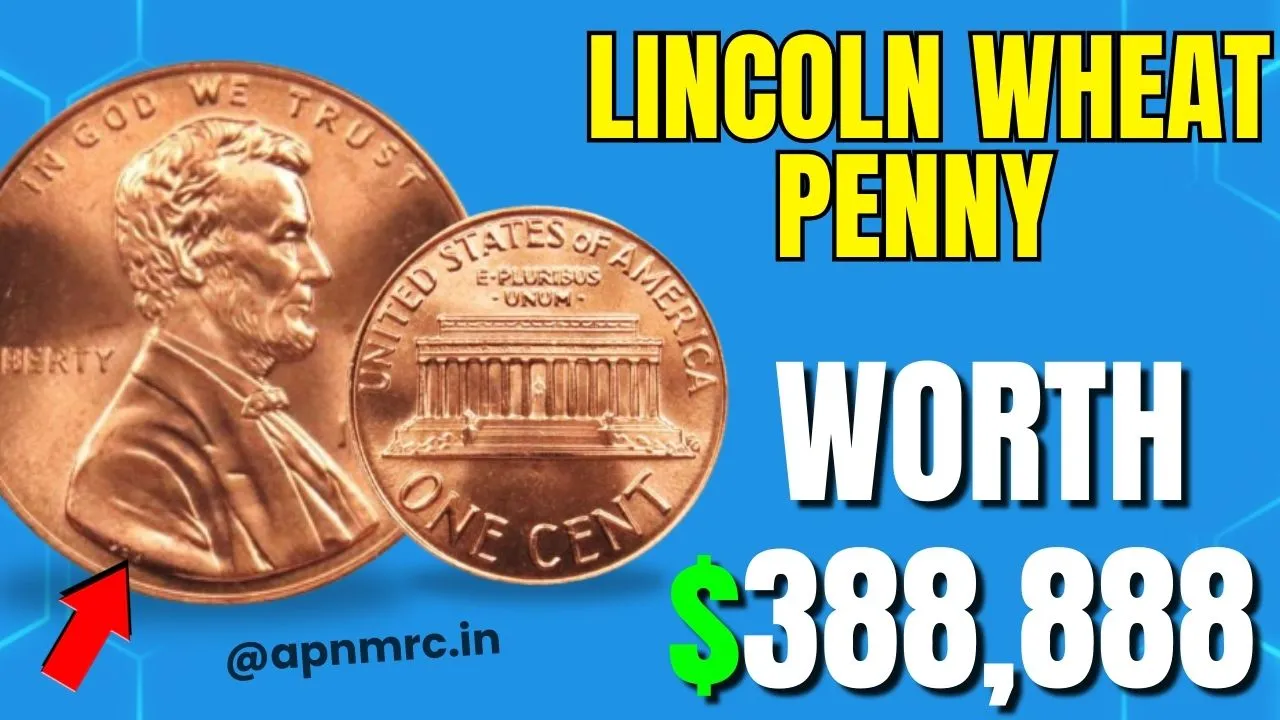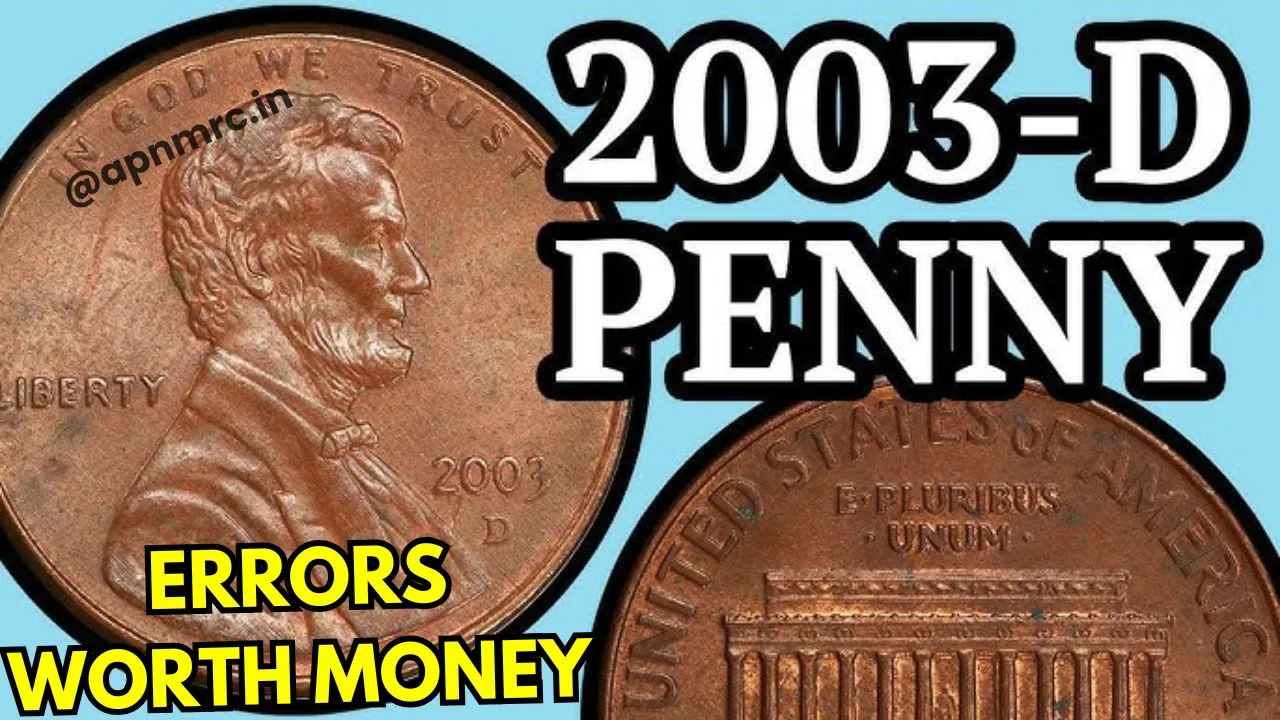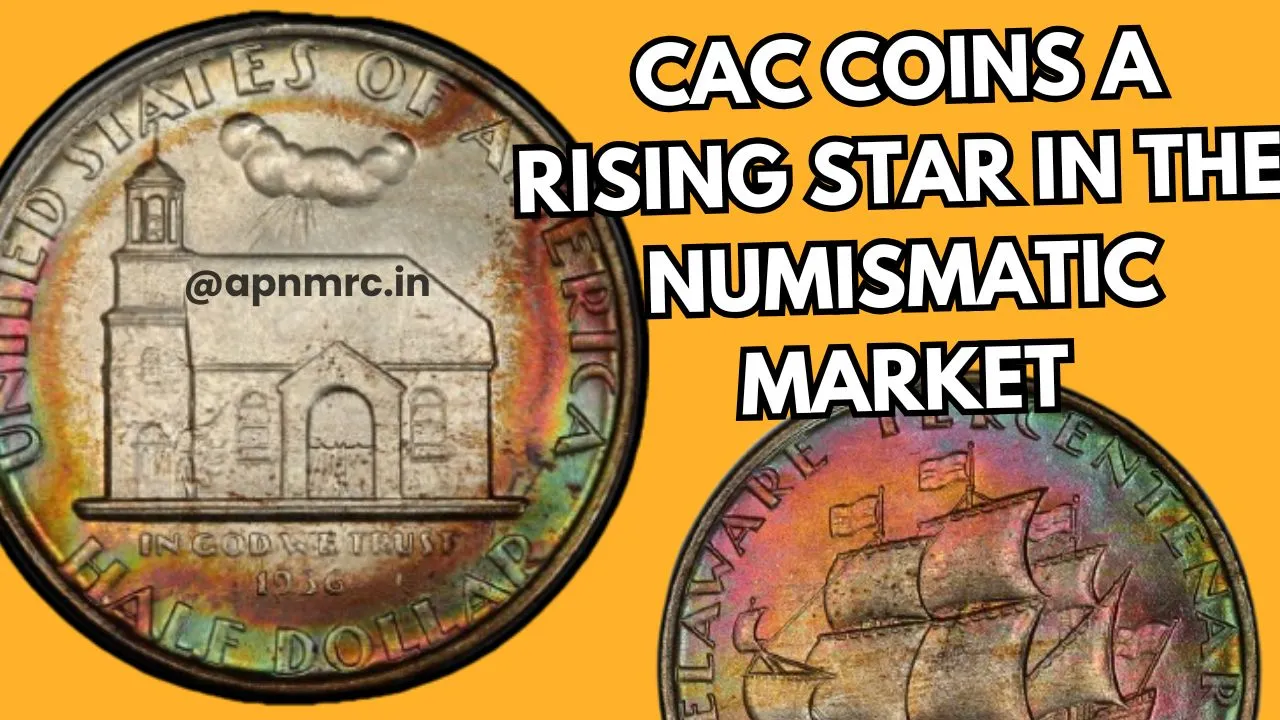Top 6 State Quarter Errors: Did you know that some ordinary-looking quarters in your pocket could be worth thousands of dollars? These hidden gems, known as state quarter errors, are rare coins with minting mistakes that collectors eagerly seek. Released between 1999 and 2008, the State Quarters series commemorated the unique culture and history of each U.S. state. While most of these quarters hold only their face value, certain coins with striking errors have become highly valuable.
This article dives into the fascinating world of state quarter errors, highlighting six extraordinary coins that could be worth up to $1,000 or more. From quirky die cracks to dramatic design shifts, these rare mistakes offer a glimpse into the imperfections of coin production—and the exciting potential for collectors.
Overview of Top State Quarter Errors
| Year/State | Error Name | What to Look For | Value (Circulated) | Value (Uncirculated) |
| 1999 Delaware | Spitting Horse | Die crack creating a line from the horse’s mouth | $20–$75 | $150–$1,000+ |
| 2004 Wisconsin | Extra Leaf | An extra leaf on the corn stalk | $50–$300 | $1,000+ |
| 2005 Minnesota | Doubled Die Reverse | Doubling in tree details | $50–$100 | $300–$1,500 |
| 1999 Georgia | Off-Center Strike | Misaligned design leaving part of the coin blank | $50–$300 | $1,000+ |
| 2006 Colorado | Cud Error | Raised blob caused by a broken minting die | $100–$500 | $1,000+ |
| 2000 New Hampshire | Missing Clad Layer | Exposed copper core on one or both sides | $500–$1,200 | $2,000+ |
1. 1999 Delaware Quarter – The “Spitting Horse” Error
The “Spitting Horse” error is a charming mistake found on the Delaware quarter, the first in the State Quarters series. This error occurs due to a die crack that forms a raised line extending from the horse’s mouth, creating the amusing illusion of a spitting horse.
Collectors love this error not only for its humor but also for its historical significance as the inaugural coin in the series. Circulated examples typically sell for $20 to $75, while pristine, uncirculated coins can reach values exceeding $1,000. If you think you’ve spotted this error, use a magnifying glass to inspect the area near the horse’s mouth for a raised line.
2. 2004 Wisconsin Quarter – Extra Leaf Error
One of the most intriguing errors in the State Quarters series is the “extra leaf” error on the Wisconsin quarter. Due to a mistake during minting, some coins feature an additional leaf—either above or below the main leaves on the corn stalk depicted on the reverse side.
This error stands out for its rarity and visual distinctiveness, making it highly desirable among numismatists. Circulated coins fetch between $50 and $300, while uncirculated versions can exceed $1,000 in value. To find this rare error, examine the corn stalk closely with good lighting and magnification.
3. 2005 Minnesota Quarter – Doubled Die Reverse
The 2005 Minnesota quarter features a fascinating doubled die reverse error, where the design is unintentionally duplicated. This doubling is most visible in the trees near the horizon line on the coin’s reverse side.
While the doubling can be subtle, collectors prize this error for its complexity and uniqueness. Circulated coins sell for $50 to $100, while uncirculated examples can command prices up to $1,500. To spot this error, use a magnifying glass to carefully inspect the tree details for overlapping images.
4. 1999 Georgia Quarter – Off-Center Strike
Off-center strike errors are among the most eye-catching mistakes in coin production, and the Georgia quarter is a standout example. This error occurs when the coin isn’t properly aligned during minting, leaving part of the design incomplete or shifted to one side.
The dramatic appearance of off-center errors makes them highly collectible. Minor misalignments are valued at $50 to $300, while coins with significant off-center designs—where 50% or more of the design is missing—can sell for over $1,000. Look for a visibly misaligned design, where parts of the coin appear blank or unfinished.
5. 2006 Colorado Quarter – Cud Error
The Colorado quarter is famous for its “cud” error, a raised blob caused by a piece of the minting die breaking off. This error often appears near the rim or within the design elements of the reverse side.
Cud errors are rare and visually striking, making them a favorite among collectors. Circulated coins with this error typically sell for $100 to $500, while uncirculated examples can fetch over $1,000. To identify a cud error, look for raised, irregular blobs that disrupt the normal pattern of the coin’s design.
6. 2000 New Hampshire Quarter – Missing Clad Layer
One of the most dramatic state quarter errors is the missing clad layer found on some 2000 New Hampshire quarters. This error occurs when one or both outer metal layers fail to adhere during minting, exposing the copper core underneath.
The visual difference—a darker, coppery hue—makes these coins incredibly rare and highly valuable. Coins with one missing clad layer are valued at $500 to $1,200, while those missing both layers can reach up to $2,000. If you suspect this error, check for a reddish color and confirm with a coin scale, as these coins weigh less than standard quarters.
How to Spot and Protect Valuable Error Coins
Tools You Need:
- Magnifying Glass or Microscope: Essential for spotting subtle errors like die cracks or doubling.
- Coin Scale: Detects weight differences, especially for missing clad layer errors.
- Reference Materials: Use online databases or guidebooks to verify potential errors and estimate their value.
Handling and Storage Tips:
- Handle coins only by their edges to avoid fingerprints or scratches.
- Store valuable coins in protective holders or cases to maintain their condition.
- Never clean coins, as this can damage their surface and drastically reduce their value.
Start Hunting for State Quarter Errors Today!
The world of state quarter errors is full of surprises, offering collectors the chance to uncover rare and valuable coins in the most unexpected places. Whether it’s the playful “Spitting Horse” or the striking missing clad layer, these coins are more than just mistakes—they’re treasures waiting to be found.
So, the next time you check your spare change, take a closer look. That simple quarter in your hand might just be worth a fortune!
